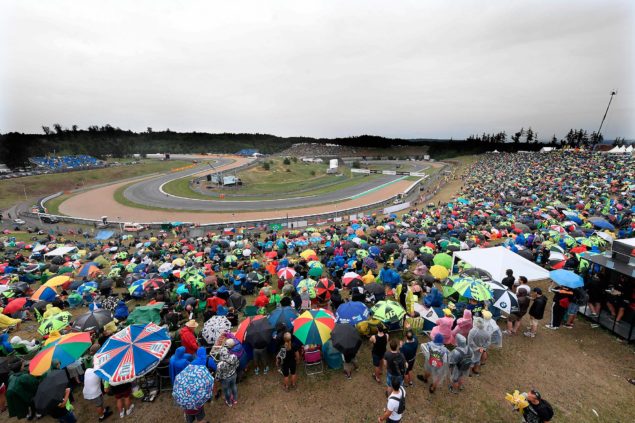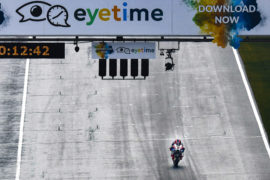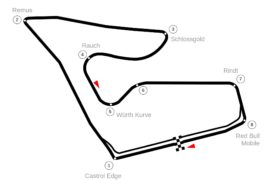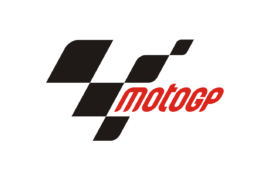Flag-to-flag races. You either love them or hate them. For some, flag-to-flag racing adds an extra dimension to MotoGP, rewarding teams and riders who are smart with their strategy selection, bringing much greater rewards for those who are prepared to take calculated risks, while also carrying a much greater punishment if you risk too much.
It is not enough to get the setup right for the conditions, teams also have to assess how conditions might change, and riders have to judge the optimum time to come in and swap bikes. It places a greater emphasis on teamwork, rather than just the rider.
For others, however, flag-to-flag races are just a lottery, the outcome decided largely by chance. Victory goes not necessarily to the fastest rider on the track, but to the one who gambles correctly on the right tire, the right time to pit, on how the weather develops.
The team has too much influence on the outcome, relegating the rider to a secondary role. It isn’t the fastest rider who wins the race, it is the luckiest rider.
Unsurprisingly, there is often a correlation between how you feel about flag-to-flag racing and how your favorite rider performs in those conditions. My favorite rider is a master strategist, backed by a canny team.
Your favorite rider is a lucky devil who fell face first into a bucket full of horseshoes, and wouldn’t have won if it hadn’t been for the team doing all the hard work and telling them exactly what to do and when to do it.
You can’t always get what you want
After the MotoGP race in Brno, there were plenty of fans bemoaning the fact that they had been deprived of what looked like being an epic battle. After qualifying, it looked there were five or six riders all on the same pace, and all capable of winning.
If it had remained dry during the warm up, the teams could have made the last few adjustments to prepare for the coming race, and made the field even more competitive. That would have yielded a thrilling race, full of heroic escapades and derring-do.
Instead, with the race starting wet but drying out very rapidly, Marc Márquez had effectively secured victory within the space of a two-lap period.
The battle for the lead was brief, Valentino Rossi chasing down Jorge Lorenzo in the early laps, before Márquez’s early dive into the pits for slicks sealed the win for the Repsol Honda rider.
There were battles here and there throughout the field, but they were often settled quickly and decisively. It was not a nail-biting knock-down, drag-out battle from start to finish.
While the results may not appear thrilling on paper, how those results came about offer a wealth of fascinating stories, a rich and complex cocktail of choices, gambles, and decisions that affected the outcome.
The normal set of decisions riders and teams make in setting up a bike are magnified, expanded out, and made much clearer and easier to comprehend.
A Rich Tapestry
So how did Marc Márquez win the race at Brno, and extend his lead in the championship? There were a lot of factors that came into play.
Some of those were misjudgments which just happened to play out well, such as the Repsol Honda rider choosing to start with the soft wet tires, rather than the mediums favored by everyone else, which quickly overheated and forced him into the pits to change bikes early.
Some were clever choices based on empirical data, such as having his second bike in dry trim, rather than in the identical wet setup favored by many other riders, which allowed him to come into the pits to change bikes early.
And some were down to sheer talent, the ability to manage a bike in the unpredictable and sketchy grip offered by a rapidly drying track, which allowed him to pull out a 15-second advantage in around two laps.
If you had to nominate one factor that was the key to it all, it would be Márquez and his team’s decision to have the spare bike already in dry trim at the start of the race.
Under normal conditions, each rider has their second bike set up to be as identical as possible to the number one bike which they are starting the race on.
Flag-to-flag races are a good deal more complex. An hour before the race starts, when they have their pre-race meeting, the teams have to take an educated guess at what the weather will do. They have to judge how wet the track will be at the start of the race, and how quickly it will dry once the race is underway.
Based on these guesses, they have to decide a strategy. Do they keep both bikes identical, so that if the rider crashes on the sighting lap or on the warm up lap, they can come back into the pits, jump on the spare bike, and try to get back where they started from?
Or do they start the race with a wet bike and a dry bike, relying on the rider not to crash before the start, and allowing them to come in to swap bikes very shortly after the start?
Trust Your Team
It is these decisions that would prove decisive. Marc Márquez won the race because he elected to have a wet and a dry bike. Jonas Folger lost a good shot at a podium, because he came in to the pits very quickly, while his team was still changing the bike from wet to dry.
Jorge Lorenzo’s team misjudged where he was on the track, sending the message to pit too early, meaning he came in before his second bike had been switched to a dry setup.
Andrea Dovizioso had to stay out for too long while his team swapped the spare bike to a dry setting, losing valuable time to the leaders while the medium wet tires were ten seconds a lap slower than slicks.
There were other choices that proved fatal to riders’ chances. In addition to staying out too late, for example, Ducati decided to put soft slicks on the front and rear of Dovizioso’s GP17, a choice that would prove to be the wrong one for the rapidly drying track.
Aleix Espargaro had elected to start the race on his new Aprilia RS-GP with the more powerful engine, believing the track would remain wet for most of the race, and he would have enough in hand to battle for a strong finish.
Valentino Rossi would choose to stay out too long, trying to make up ground on wet tires in tricky conditions where he believed he was fastest. Cal Crutchlow decided to follow Dani Pedrosa into the pits rather than Marc Márquez, believing that Pedrosa had better pace at Brno than Márquez.
It is this rich tapestry of stories that makes a flag-to-flag race so fascinating. There are ten times as many opportunities to make a difference to winning the race, but there are also ten times as many potential pitfalls which could see you out of the race. The potential for rewards is high, but then so are the risks.
History Doesn’t Repeat Itself
The race here last year also factored into the decisions made by the teams. By the time the riders finished the sighting lap, the rain had more or less stopped, and dry lines were starting to form at the bottom part of the track around Turn 10.
But the front straight was still fully wet, as was the upper half of the track. In 2016, the track had been tremendously slow to dry out, making the medium wet tire the perfect (and winning) choice for the track.
Those who chose soft tires chewed their tires up too quickly, especially at the front. Those who switched to slicks soon repented of that choice, coming back into the pits for another set of wet tires.
The teams had seen the Moto3 race earlier in the day, which had also started on a damp track with barely any rain, yet had remained wet for most of the race. A rain shower during Moto2 had caused it to be stopped and restarted, the track still damp.
Based on last year’s data and what they had seen with the support classes, MotoGP engineers decided that the smart bet was that the track would remain wet for a significant part of the race.
“I was surprised how quick the track dried up this time because normally it would take much longer,” Dani Pedrosa said in the press conference. Andrea Dovizioso had said the same earlier.
“This track becomes dry very slow. Last year in the race it showed this. Friday, it was like this. In Moto3 today it was like this.” But when the sun came out just before the race started, the track started drying very quickly.
Risk Management
It is here where Marc Márquez won the race. Deciding to start on the soft wets may have been a mistake, but the Spaniard quickly made a virtue of that vice.
“My plan was try to push a lot in the first four or five laps and then go in, because I saw that start to be dry,” Márquez said. “But honestly, was the incorrect decision because the rear tire was spinning too much. Was too soft and I was losing many, many positions.”
Coming in at the end of the second lap for slicks proved to be the winning move. But it is a move perhaps only Márquez could have made quite so successfully.
Márquez’s exceptional feel and ability to teeter on the brink of grip was demonstrated during qualifying, where he appeared to average a little over one outrageous front-end save per lap.
He has honed his cat-like reflexes to a fine point riding dirt track, playing with grip in unpredictable conditions. So he comes into his own on slicks on a drying track.
“Today I felt like I want to take a risk,” Márquez said. “I want to push. I take a risk to try to win the race. When I went out with the slick tires was still very, very wet. I nearly crashed three or four times in the first lap especially. Then I cool down a little bit. I start to warm the tires well.”
Jorge Lorenzo backed up Márquez’s assessment of himself: “Marc is honestly very good to go quick suddenly when he switches from wet tires to dry tires, he’s the best one in those conditions, he’s very aggressive and he warms up the tires very quickly. I’m not the best one at that.”
That means that when he rides, it is not just that he is willing to take risks, he is also capable of managing them. “This is one of the positive things of Marc,” Dovizioso explained. “He’s able to manage. It’s not just about taking a risk. Nobody wins from taking a risk. It’s about managing all the things.”
Márquez managed that risk perfectly. He had dropped back from second at the end of the first lap as his soft wet rear began to spin, diving into the pits at the end of Lap 2.
He was out of the pits on Lap 3, and ten seconds a lap quicker than the leaders on Laps 4 and 5. At the end of Lap 7, by which time most people had already swapped to their dry bikes, Márquez led by 19 seconds. The race had long been over.
The Right Time and the Wrong Time
Before the race, Márquez’ Repsol Honda teammate had been widely tipped as the man to beat. But a hesitancy on the part of Dani Pedrosa cost him the chance of battling for the win. “I was surprised how quick the track dried up this time because normally it would take much longer,” Pedrosa explained.
“Then I was thinking about coming in and I decided just to pass one more time. Unfortunately, one lap too late, I guess, for having a more easy race in the slicks.” Pedrosa gave himself some work to do to pass other riders because of this, but he still ended up second behind his teammate.
Brno ended up being a decent weekend for Maverick Viñales. After complaining of a lack of turning in the dry, the setup tweaks the team found on Saturday ended up working. Viñales probably came in a lap too late, like Pedrosa, but like Pedrosa, the Movistar Yamaha rider still made it to the podium.
He had recovered some of the positive feelings with the Yamaha that had been missing. With a new chassis to test on Monday – reportedly bringing him back level with his teammate, who was using it this weekend – Viñales goes to Austria with some more confidence, at least.
Old Dog, New Tricks
Valentino Rossi once again found a way to lose a flag-to-flag race. As the veteran of the class, Rossi is perhaps the least well-adapted to the format.
Rossi grew up with restarted races and aggregate times, and is yet to master the art of finding the perfect time to come in and swap bikes. “For sure it’s not my stronger point, this type of racing,” he told us late on Sunday afternoon.
Yet he was not unhappy. “At the end the result is not so bad,” Rossi said. “We improve a lot from the other flag-to-flag. I finish fourth.” Rossi was pleased with his pace both in the wet and in the dry, and saw that as a positive.
We were not to view this flag-to-flag as a carbon copy of the Sachsenring race last year, he complained. “It’s not like last year,” Rossi said. “We agreed with my team to show ‘BOX’ and when I see ‘BOX’ I come back in.”
Too Fast for His Own Good
His problem was not so much one of timing, but rather one of position, Rossi explained. He is quick in the wet, and often finds himself leading a group as a result. That makes it hard to base his decision on when best to come into the pits on other riders.
After all, they are behind him, rather than ahead of him, and he can’t see whey they are pitting for new bikes. “I always have the problem in this condition that I’m first.” Rossi explained. “A lot of riders are helped by being in the second group. One enters and everyone enters. The problem is I was a bit too strong in the wet. ”
The bike was a little trickier to handle on a drying track on slicks, too, Rossi said. “Usually in the first lap with the slicks in the wet, we are a bit in trouble with the Yamaha.” It all comes back to confidence, to an unyielding faith in the bike and the tires. Flag-to-flag races test both to breaking point.
Cal Crutchlow crossed the line in fifth, after failing to hold off Rossi on the final couple of laps. Crutchlow was irritated that he had put all his money on Pedrosa, he said. The Englishman believed that Pedrosa was the favorite before the race, and had decided to throw his hat in with the Repsol Honda rider.
He would wait until Pedrosa pitted, and then pit to swap bikes himself. Afterward, he realized this had been the wrong strategy, the correct strategy being to follow the other Honda into the pits.
Crutchlow had given it consideration. When he passed Márquez on the second lap, he felt that the Spaniard had capitulated too easily. “I knew he was pitting because he never fought back!” Crutchlow joked.
“That’s not Marc’s nature and then as we went into the last corner I looked across and I could see him. I thought ‘you little….!’ Because I knew he had out-foxed us again, the same as in Sachsenring last year.”
Bologna Stumbles
If the two factory Hondas and two factory Yamahas were doing so well in Brno, things were going far from swimmingly for Ducati.
After the brilliant way in which they manipulated the aerodynamic rules to create a unique fairing, completely with a couple of wing-like structures, their strategy in flag-to-flag races was abysmal.
Andrea Dovizioso came away best. First, he and his team decided to start the race with two wet bikes, then swap the spare bike to a dry setup once the race was underway.
But the change took too long, and Dovizioso was left circulating on wet tires for one lap too many. Then they had the bike set up wrong, with a soft rear and soft front tire, which didn’t work on a drying track.
Dovizioso shouldered some of the blame for swapping bikes too late himself. “I stopped too late, first because the bike wasn’t ready, and second because I didn’t feel like I had to stop before,” he said.
“When you’re riding it’s very difficult to take a decision when the track still is half and half. Today it became dry very quick. Marc, like always, was almost over the limit but it worked.”
Where the Blame Lies
If Dovizioso was relatively sanguine about the whole affair, Jorge Lorenzo was quietly livid. Though he did his best not to apportion blame on the team all too blatantly, it was obvious that he felt the blame lays squarely at the feet of his team.
“I just wanted to make one or maximum two more laps before entering the pits, making a signal to the guys,” Lorenzo said. “But just 3 corners before I entered the pits I received a signal on the dashboard, “Bike Change”. So when I saw that, I entered the pits, understanding that the bike was ready.”
Only it wasn’t. The team had accidentally exposed a weakness with the system: if you send a message too early, then the rider might come in before you are ready.
Ducati has been pioneers adopting the dashboard messages – which requires the latest version of the unified software on the spec Magneti Marelli ECU to function.
The team used that system to send a message, presuming he would receive it as he crossed the line, giving themselves another couple of minutes to complete the work.
But Lorenzo was still a few corners from the finish, and had time to enter the pits at the end of that same lap. There, he was forced to sit and wait while they finished up his bike.
Ready or Not…
“Probably the team saw that Marc was so fast already, they decided to take the risk to put this signal already one lap before, so we wouldn’t lose more seconds,” Lorenzo said. “But their guess was that it would take 30 or 40 seconds to change the bike, but it wasn’t enough, and my bike was not ready.”
“When I entered I saw the team working on the bike, the suspension technician putting the right settings, and when I exited the bike felt a little bit strange, and they told me also that my setting was half dry, half wet. Which is why I couldn’t go a little bit faster during these eighteen laps.”
It was a shame for Lorenzo, for Brno was the first weekend the Spaniard had looked really comfortable on the bike. The addition of the aerodynamic package gave Lorenzo the confidence in the front end he so badly needed to brake and enter the corner a little better.
The interior winglets helped keep the front wheel along the straight, making preparing for the corner a little easier. Lorenzo took that confidence and built on it to brake better and turn the bike in as he wanted.
“Today was the perfect day and situation to finally win a race with Ducati,” Lorenzo said. “I don’t think I’m exaggerating, I always say the truth, and today I felt that I could have this chance. The bike gave me so much confidence that in any conditions, on rain, with more water, with less water, I was really really quick. But we were unlucky that in these 40 minutes of MotoGP the track dried up.”
It looks like Jorge Lorenzo has turned a corner at last on the Ducati. Only the next few races will reveal just how true that is.
Accidents Waiting to Happen
The Brno MotoGP race also aptly illustrated the downside to flag-to-flag races. At the end of Lap 3, a gaggle of riders entered the pits. Andrea Iannone entered towards the rear of the group, while Aleix Espargaro had been on of the first to enter.
Espargaro was released directly into the path of Iannone, and the unfortunate Italian was forced to brake too hard, wiping out his front. Iannone was unhurt, but he was understandably furious.
Espargaro was suitably contrite. The blame lay with his team, he acknowledged. One of the three mechanics who are allowed to work on the bike in pit lane is supposed to ensure the safe release of the bike and rider.
That mechanic did not, and down Iannone went. Espargaro was penalized and forced to drop three places, a harsh but fair penalty.
Afterwards, Espargaro explained the collision, and said that the flag-to-flag rules were a constant source of discussion in the Safety Commission. Dani Pedrosa had been advocating for World Superbike rules, where riders are held in pit lane for a fixed time, and Espargaro was impressed by the idea.
Of course, it is not up to Espargaro to be in favor of it. Such proposals must be approved by Dorna and IRTA. We shall see if they pick up this gauntlet or not.
This article was originally published on MotoMatters, and is republished here on Asphalt & Rubber with permission by the author.




